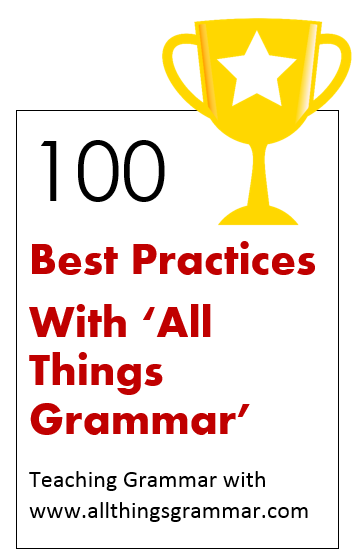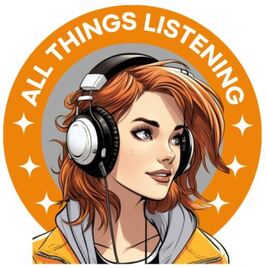It was a very special day when I realized, a few years ago, that - although my learners hate 'REAL' grammar quizzes - they absolutely love 'PRACTICE' grammar quizzes. Who would have guessed?!
It was this realization that inspired me to create as many practice grammar quizzes as I could (61 quizzes at the time of this blog post). This in turn led to the creation of the 'All Things Grammar' site. "Thank you", practice grammar quizzes!
Below are six 'Best Practices' you can use with practice grammar quizzes.
It was this realization that inspired me to create as many practice grammar quizzes as I could (61 quizzes at the time of this blog post). This in turn led to the creation of the 'All Things Grammar' site. "Thank you", practice grammar quizzes!
Below are six 'Best Practices' you can use with practice grammar quizzes.
1. Use the Quizzes as Learner Feedback
Many learners can be unsure of their progress, and lack confidence,
especially if the ‘real’ exams and quizzes are few and far apart. When I
‘teach grammar’ I like to use the quizzes as often as I can, almost on a
daily basis. It’s a great ‘wrap-up’ to a grammar lesson when my students
get high grades.
However, if many of my students get low grades on the practice quizzes, or if they tend to make mistakes on the same quiz item, it’s a signal to me that I need to spend a little more time on, say, first conditionals, before moving to second conditionals.
2. Use the Quizzes as Placement Tests
Many (and hopefully most) language programs will already have level
placement tests for students, so you will know what kind of books and
materials to bring to class.
With private one-to-one teaching, this aid may not be available. You can
use the quizzes to provide a better understanding of your learner’s level –
and which books and materials may be appropriate.
3. Correct Quizzes on the Whiteboard
Write one vertical column of numbers from 1 to 8 on the board, and another column from 9 to 16. Then, for one column, ask one student to write their answers (A, B, or C) next to each number; another student writes the other
eight answers.
Then, before checking the answers, ask your class to look for any possible mistakes – then discuss the results.
4. Correct Quizzes with the On-line Quiz Versions
Many (not quite all, yet) of the quizzes have matching online versions (with
the exact same questions and answers). So, when most of the students
have completed the quiz, you can open the corresponding page and project the
quiz on the smart board.
Then, elicit their answers (a show of hands for the best answer if there is disagreement), and select one of the three choices available. Click on the
'Let's Go' button, and the quiz will provide a percentage result and other information. Links to the on-line versions are available right below the
printable versions (see also the link at the bottom of this page).
5. Give Grammar Quizzes for Homework
You’ve taught one or more grammar items in your lesson – what to give
your learners for homework? Why not give them a grammar quiz? The
quizzes will challenge and motivate your learners. Collect and correct.
6. Use the Quizzes as a Source of Ideas
You may want to (or need to) create your own quizzes based on your own school’s curriculum, so ‘All Things Grammar’ Quizzes can be a great source
of ideas to inspire you.
Many learners can be unsure of their progress, and lack confidence,
especially if the ‘real’ exams and quizzes are few and far apart. When I
‘teach grammar’ I like to use the quizzes as often as I can, almost on a
daily basis. It’s a great ‘wrap-up’ to a grammar lesson when my students
get high grades.
However, if many of my students get low grades on the practice quizzes, or if they tend to make mistakes on the same quiz item, it’s a signal to me that I need to spend a little more time on, say, first conditionals, before moving to second conditionals.
2. Use the Quizzes as Placement Tests
Many (and hopefully most) language programs will already have level
placement tests for students, so you will know what kind of books and
materials to bring to class.
With private one-to-one teaching, this aid may not be available. You can
use the quizzes to provide a better understanding of your learner’s level –
and which books and materials may be appropriate.
3. Correct Quizzes on the Whiteboard
Write one vertical column of numbers from 1 to 8 on the board, and another column from 9 to 16. Then, for one column, ask one student to write their answers (A, B, or C) next to each number; another student writes the other
eight answers.
Then, before checking the answers, ask your class to look for any possible mistakes – then discuss the results.
4. Correct Quizzes with the On-line Quiz Versions
Many (not quite all, yet) of the quizzes have matching online versions (with
the exact same questions and answers). So, when most of the students
have completed the quiz, you can open the corresponding page and project the
quiz on the smart board.
Then, elicit their answers (a show of hands for the best answer if there is disagreement), and select one of the three choices available. Click on the
'Let's Go' button, and the quiz will provide a percentage result and other information. Links to the on-line versions are available right below the
printable versions (see also the link at the bottom of this page).
5. Give Grammar Quizzes for Homework
You’ve taught one or more grammar items in your lesson – what to give
your learners for homework? Why not give them a grammar quiz? The
quizzes will challenge and motivate your learners. Collect and correct.
6. Use the Quizzes as a Source of Ideas
You may want to (or need to) create your own quizzes based on your own school’s curriculum, so ‘All Things Grammar’ Quizzes can be a great source
of ideas to inspire you.
Thank you for visiting my second blog post!
Check back in another 2 weeks to find out more about
'All Things Grammar' Word Searches. :)
Check back in another 2 weeks to find out more about
'All Things Grammar' Word Searches. :)







